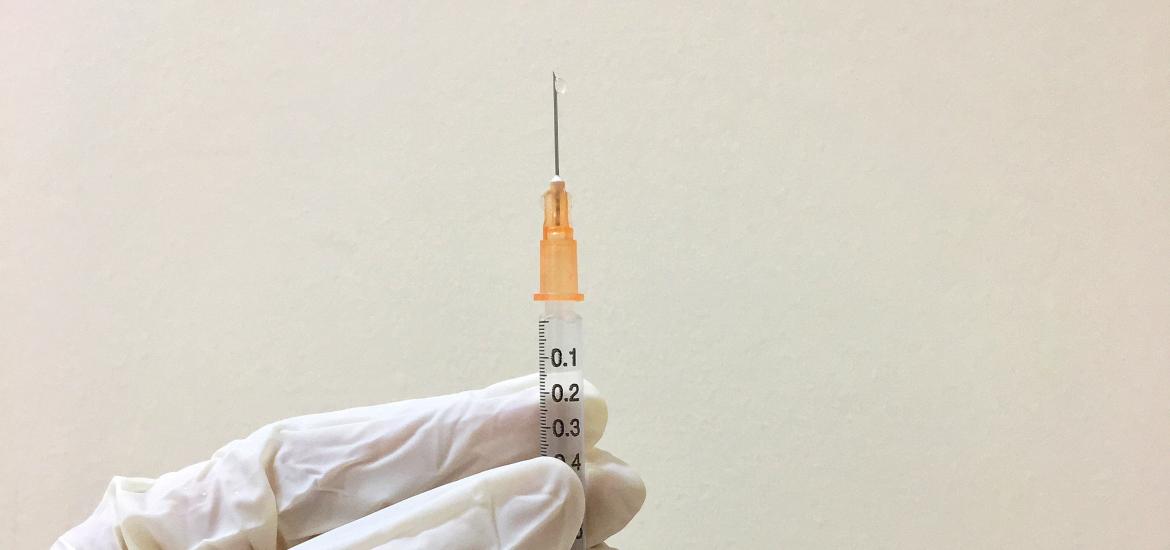
A subcutaneous answer to PD-1’s patent problem
PD-(L)1 players are increasingly looking to subcutaneous delivery to maintain market share, and next month brings a major catalyst.
PD-(L)1 players are increasingly looking to subcutaneous delivery to maintain market share, and next month brings a major catalyst.

Keytruda is firmly established as one of the biggest-selling drugs ever, but its US patents will start to expire in 2028, putting pressure on its maker, Merck & Co. One way to minimise the loss of billions of dollars of sales is to develop subcutaneous formulations with longer exclusivity and a convenience advantage.
Major catalysts are approaching in this field – for Merck and other big pharma developers of anti-PD-(L)1 drugs alike. The most immediate is a 15 September US FDA action date to decide on the approvability of a SC formulation of Roche’s Tecentriq, on the basis of the phase 3 Imscin-01 trial that the Swiss group quietly toplined as positive a year ago.
For Roche the problem is less pressing: Tecentriq is a far less significant drug than Keytruda, and its US patent claims to hold until around 2032. Still, the way Roche went about designing Imscin-01, and whether the FDA deems this sufficient for greenlighting all of Tecentriq’s current uses, will be of huge importance.
All approved indications?
Last December Imscin-001 data were quietly presented at the ESMO-IO meeting. The study’s phase 1 stage showed the SC form to have similar serum trough concentration to IV, and the phase 3 portion demonstrated pharmacokinetic exposure of SC to be non-inferior to IV.
But here’s the key detail: though Imscin-001 concerned second-line, post-chemo NSCLC, the data it generated are expected to support the registration of the SC formulation “across all approved indications of IV Tecentriq”, according to Roche’s statement.
If this plan succeeds the same will apply also to Merck, whose phase 3 3475-A86 trial compares IV Keytruda plus chemo against SC Keytruda plus chemo in patients with front-line NSCLC. The Merck study's co-primary measures concern bioavailability, in terms of area under curve and trough concentrations, while adverse events, PFS and OS feature as secondary endpoints.
The co-primaries are broadly similar to those in Imscin-01, and the aim is to show SC to be non-inferior to IV dosing. However, Merck has not spelled out the margin SC Keytruda needs to hit to demonstrate non-inferiority; in Imscin-001 the non-inferiority floor was defined as a lower bound of the 90% confidence interval of at least 0.80; PFS curves were virtually identical for IV and SC Tecentriq, and so was adverse event occurrence.
That said, 3475-A86 might not be Merck’s primary focus. That trial uses a three-week dosing cycle, and formally ended in April with no data released so far. Merck has more recently been highlighting the convenience of three as well as six-week dosing, and for the latter use it has co-formulated Keytruda with a recombinant hyaluronidase coded MK-5180.
However, a trial of the six-week form will not end until 2026 – uncomfortably close to Keytruda’s expected patent expiry. Roche’s SC uses Halozyme’s Enhanze technology, which also lies behind its SC forms of Rituxan and Herceptin.
Others
Other big pharma players have upcoming SC formulation readouts looming, and Bristol Myers Squibb gave investors a scare earlier this year with the termination of one SC Opdivo programme.
However, executives stressed that the renal cancer Checkmate-67T trial, using a syringe and vial, was continuing, and that instead it was the seemingly more convenient autoinjector programme that had been canned. The latter had not shown sufficient “additional benefit for continuing”, the group said on its first-quarter earnings call.
Another key player is Pfizer, which is developing sasanlimab as its SC contender, but a crucial difference here is that this is a new molecular entity so – in contrast to SC forms of currently available IV anti-PD-(L)1 drugs – a separate pivotal study will be needed for every indication.
Mizuho analysts reckon 2028 loss of exclusivity on IV Keytruda could erode over 75% of the drug’s sales within five years, but say successful launch of a SC form could limit the damage to just 30%, based on the IV-to-SC switch of J&J’s multiple myeloma drug Darzalex. Prospects should become much clearer next month.
Selected subcutaneous PD-(L)1 projects in the clinic
| Drug | Company | US patent expiry on IV | SC formulation | Clinical trial(s) | Status |
|---|---|---|---|---|---|
| Tecentriq | Roche | 2032 | With Halozyme's Enhanze rHyPH20 (hyaluronidase) | Imscin-001 (ph3) backed pharmacokinetics of SC vs IV | Filed in US, Pdufa date 15 Sep 2023 |
| Keytruda | Merck & Co | 2028 | No hyaluronidase | 3475-A86 (3wk cycle) | Ended Apr 2023 |
| With Alteogen's MK-5180 (rh hyaluronidase) | MK-3475A-C18 (6wk cycle) | Ends Sep 2026 | |||
| Opdivo | Bristol Myers Squibb | 2028 | With Halozyme's Enhanze rHyPH20 (hyaluronidase) | Checkmate-67T (ph3) using syringe & vial | Ended Jul 2023 |
| Studies in adjuvant melanoma & others, using autoinjector | Terminated | ||||
| Imfinzi | Astrazeneca | 2031 | Unclear | Scope-D1 (uncontrolled ph1/2) in NSCLC & SCLC (chemo combo) | Ends Sep 2023 |
| Sasanlimab | Pfizer | NA | No additional modification | Crest (ph3) in non-muscle invasive bladder cancer | Ends Jun 2024 |
Source: clinicaltrials.gov & company statements.
2463













